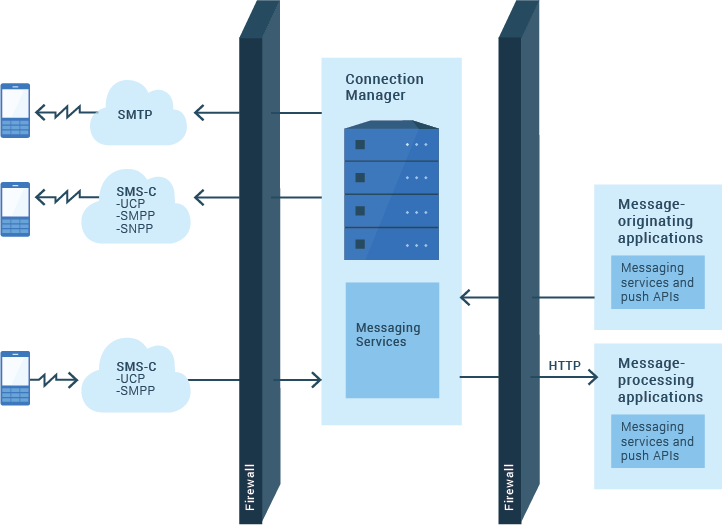Messaging services
Messaging services enable a web application server to send messages from a wired network to a client on a wireless network.
- Short message service (SMS)
- Short message delivery over proprietary networks
- Simple mail transfer protocol (SMTP)
- Wireless communications transfer protocol (WCTP)
- Simple network paging protocol (SNPP)
Messaging services support a range of message operations, including delivery of news, stock quotes, pager notifications, weather information, broadcast messages, and notification of events such as email arrival.
Messaging services are supported on SafeLinx Server installations on Linux™ only. Messaging services are not supported on Windows™. You can add only one messaging services instance to each SafeLinx Server.
For more information about the mobile network connections that are supported for messaging services, see Available MNCs for messaging services connections.
Short message delivery operation
A short message delivery operation starts when a message processing application or servlet uses the SafeLinx Messaging Services and Push APIs to send a message. The messaging services forward the message to a short message service center (SMS-C), an SMTP server, or other network server for subsequent delivery to a client.
Mobile-originated message operation
A mobile-originated message operation starts when a client sends a message to a network provider for delivery to the messaging services. Messaging services use an HTTP post operation to forward the message to an application or servlet. The application or servlet then uses the SafeLinx Messaging Services and Push APIs.
How the messaging service interacts with clients

- A messaging service that supports a message-originating application receives information from the application server and then transmits the information to mobile devices.
- A messaging service that supports a message-processing application receives messages that are sent by mobile devices and then forwards them to the messaging processing application or servlet.